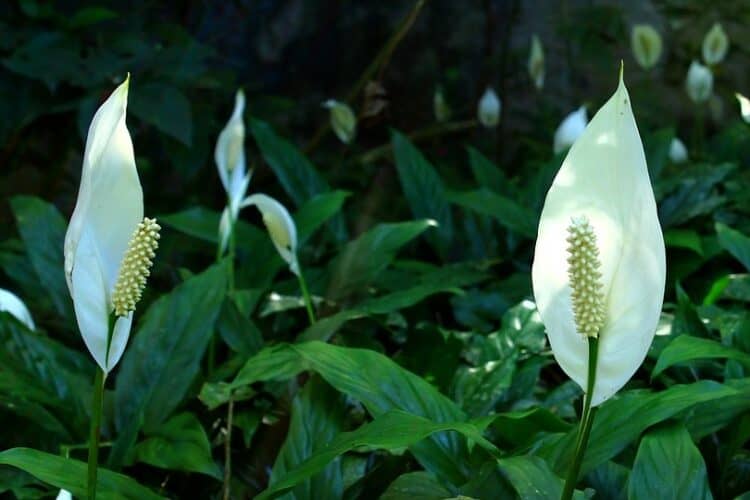The Peace Lily, with its distinctive sweet scent, silky green foliage, and delicate white flowers can be found in many homes worldwide. If you’re a cat parent, you may have come upon this post because you’re worried that your cat has taken a bite out of one of your peace lilies and don’t know how it will affect them. The good news is that your cat is unlikely to die because they consumed part of a Peace Lily.
The bad news is that Peace Lilies are still mildly poisonous to cats and have the potential to cause some serious pain and discomfort if ingested. You should certainly contact your vet if you suspect that your cat has eaten a Peace Lily to get them checked over.
How to Identify Peace Lilies
As there is such a variety of lily types, it’s important to first determine whether it’s actually a Peace Lily that you’re dealing with. This is because other types of lilies, like Easter Lilies, Tiger Lilies, Japanese Show Lilies, and Daylilies are much more dangerous to cats, with the potential to cause kidney failure and even death.
Peace Lilies have abundant foliage, making it appear as though they have no stem. The foliage is dark green, sleek, and glossy, and the leaves grow in an outwards direction. The white flower (spathe) atop the foliage is leaf-shaped, tends to curve slightly inward, and stands upright.
Most Peace Lilies grow up to 4 feet tall, but some may grow even taller.
Why Are Peace Lilies Toxic to Cats?
The Pet Poison Hotline explains that Peace Lilies are toxic to cats because they contain insoluble calcium oxalate crystals. If a cat bites into a Peace Lily, these crystals penetrate and cause irritation in the mouth tissues and GI tract. In very rare cases, the crystals may cause the upper airways to become swollen and inflamed, resulting in breathing difficulties.

What Are the Symptoms of Peace Lily Ingestion?
Because Peace Lily ingestion causes irritation in the mouth and/or gastrointestinal tract, eating one can be rather painful for cats. Signs and symptoms include:
- Crying or yowling
- Pawing at the mouth
- Vomiting
- Appetite loss
- Mouth irritation
- Drooling
- Difficulty swallowing
What Do I Do If My Cat Eats a Peace Lily?
First, remove any plant material left in your cat’s mouth and keep it for your vet to check out if necessary. This can be helpful for your vet to determine exactly what they’re dealing with. Wipe your cat’s mouth and paws with a wet cloth to remove as much residue as you can.
If your cat is showing symptoms of poisoning, try giving them some lactose-free milk or yogurt to soothe their discomfort. Contact your vet and/or pet poison hotline to find out if any further action is required. Try your best to remain calm and remember—it’s pretty unlikely that your cat will lose their life over this.
How Do I Prevent My Cat From Eating Peace Lilies?
We recommend either keeping Peace Lilies safely out of your cat’s reach or, if that’s not possible, out of your home to completely eliminate the risk of your cat getting sick by ingesting one. If you’re a plant lover, you might want to check out some pet-safe plants that you can introduce to your home risk-free.
Another option is deterrence. If you don’t want to get rid of your Peace Lilies, you could try popping a few pieces of orange, lime, or lemon peel in their pots. Alternatively, you could mix some lemon juice with water and spray it on your Peace Lily—citrus is a natural cat deterrent so this may do the trick.
Final Thoughts
As worrying as it can be to find a chunk of your Peace Lily missing, the outlook is usually positive so try not to panic. Get on the phone with your vet and explain what has happened. This will help you gain peace of mind and your vet can advise you on the best steps to take.
Featured Image Credit: Pixabay














